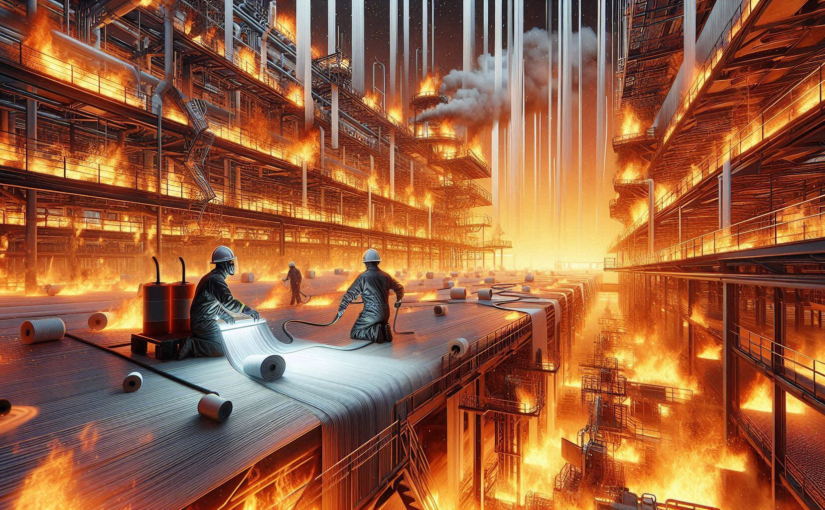In high-risk areas prone to fire outage, Fireproofing textiles thus becomes very important.
From commercial buildings to industrial zones, ensuring the safety and resilience of textile materials against fire can prevent damage of lives, materials and property.
The fireproofing of textiles is done from the materials that have been treated or manufactured to prevent the spread of flames, resist ignition and minimize the smoke generation.
What are the benefits of fireproofing textiles?
- Increased safety: Fireproof textiles help in containing the fire, giving the occupants to escape safely.
- Protection of property: The fireproofing materials minimize the risk of extensive damage of textile property thus reducing the financial losses.
- Compliance: By integrating fireproofing textiles, the facility owners can adhere to fire safety norms and standards which are important for legal compliance and insurance needs.
- Minimized liability: Organizations lower their liability by ensuring that their premises have fire-resistant materials.
What are the best practices for fireproofing textiles?
- Choosing the right materials: The facility owners must opt for fire-resistant textiles that include wool, modacrylic and certain treated polyester fabrics. It is very important to ensure that the chosen materials meet the required standards of safety and certifications.
- Chemical treatments: It is important to apply the fire-proofing materials to textiles to increase their resistance to flame and fire spread. It is important that the chemical treatments are regularly applied as their effectiveness reduces over the time period because of light exposure, washing and wear and tear.
- Regular maintenance: Periodic inspection of fireproof textiles from professionals is recommended to check the signs of damage, wear or deterioration. This will help one to replace or retreat any textiles that have lost their fire-resistant properties.
- Educate and train staff: The staff members and employees have to be trained on the importance of fireproofing of textiles. They need to be educated on how to maintain the fireproofing textiles properly. Make sure that staff members are aware of fire safety protocols and emergency evacuation norms.
- Compliance: It is equally important to ensure that all the fireproof textiles adhere with local and international fire safety standards. A certificate from recognized fire safety organizations can validate the fire resistant properties of the textiles.
Which facilities fire-proofing textiles is recommended?
Fireproofing textiles is important in high-risk areas prone to fire spread. This includes industrial settings, commercial buildings, health care facilities and hospitality industry.
Fireproofing textiles in high-risk areas is an important aspect of an all round fire-safety strategies. Prioritizing the fireproofing textiles protects the property and assets but also saves lives.
FAQs
- What is fireproofing textiles?
Fireproofing textiles is treating or manufacturing materials to resist ignition, prevent the spread of flames and minimize smoke generation. - What is the benefit of fireproofing textiles?
Fireproofing textiles increase safety protects the property and ensures compliance with fire safety norms thereby minimizing liability. - How to fireproof textiles?
Fireproofing textiles can be done by using fire-resistant materials or applying fire-retardant chemical treatments.

